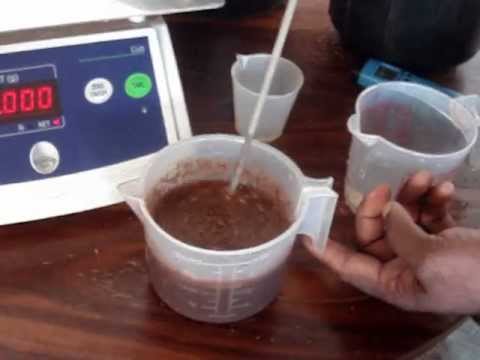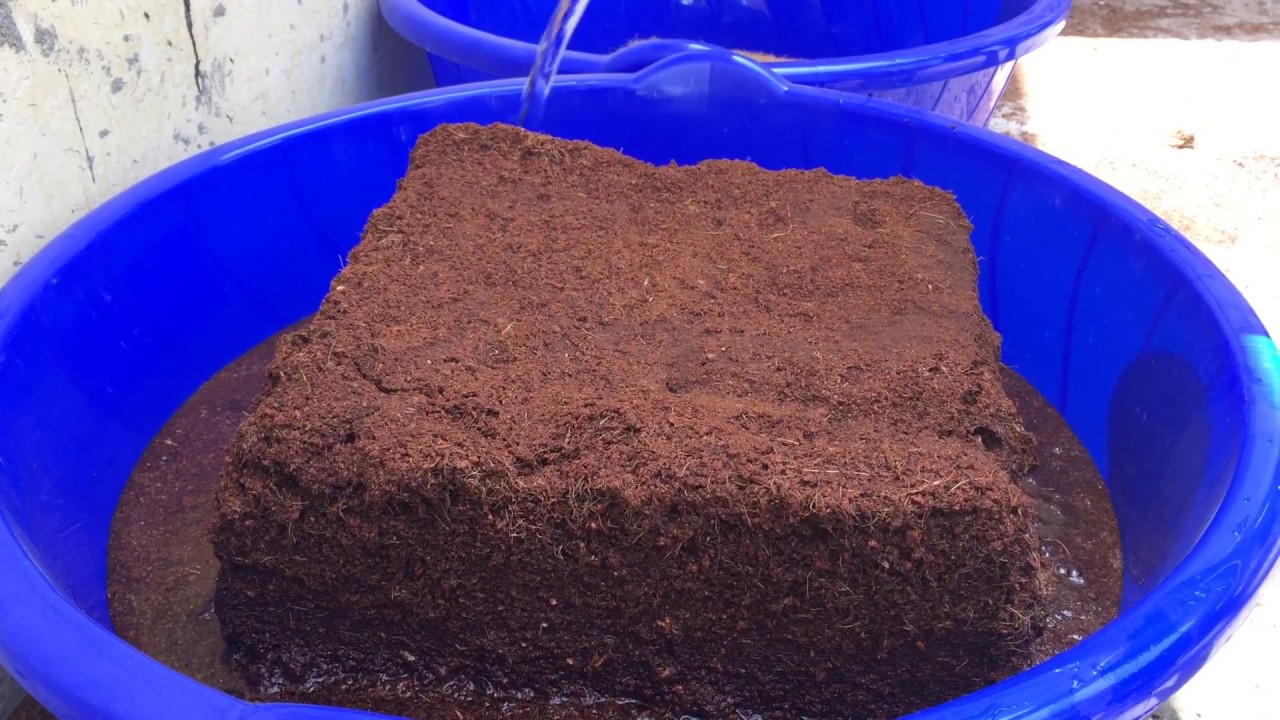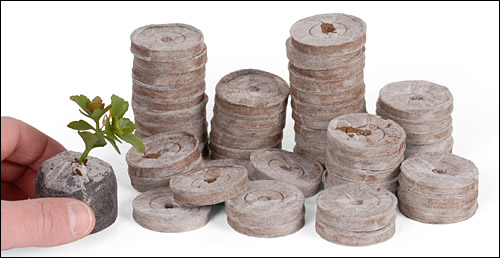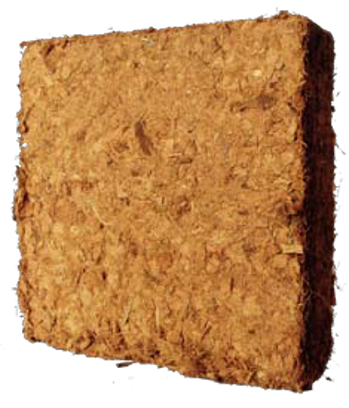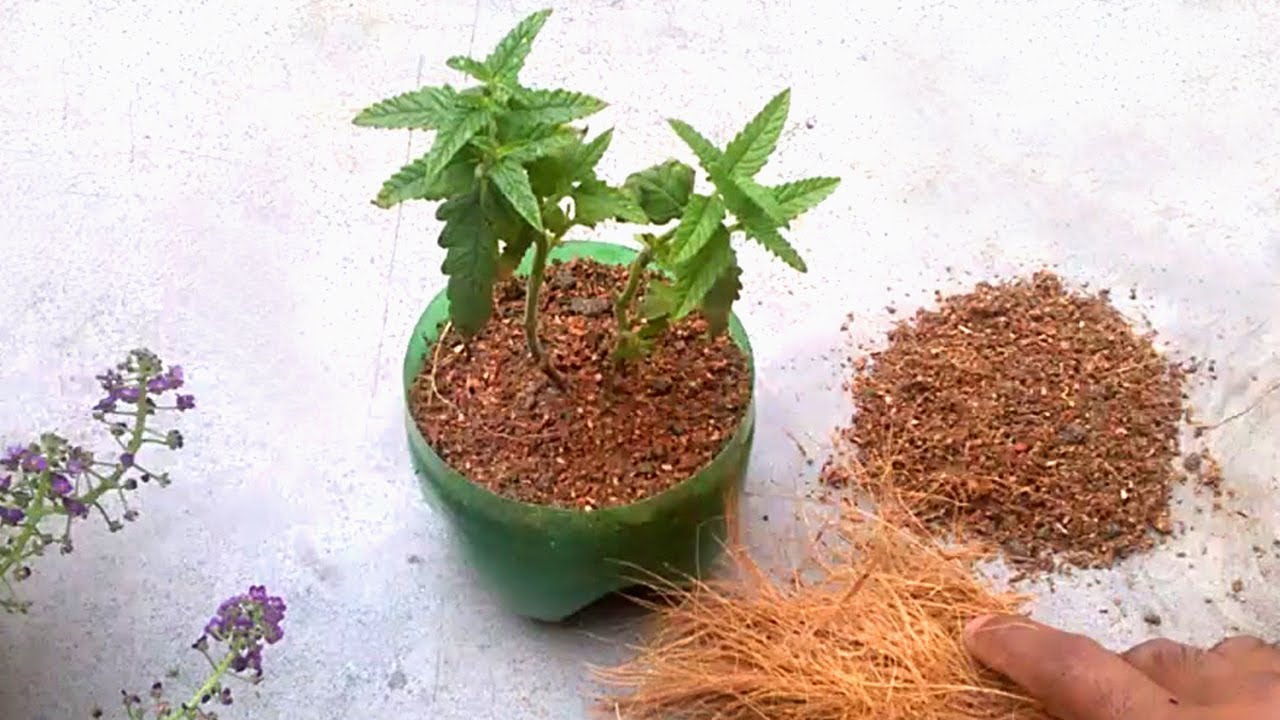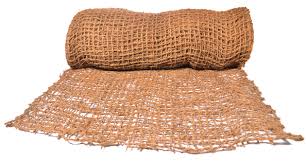Testing Methods for Cocopeat
The following are the methods of testing some important properties of cocopeat. Some suppliers may follow a different method from the methods described below. Unless specified otherwise in the quotation, the testing methods for different major properties of cocopeat shall be as below. There is no standard specified for testing cocopeat, however the following methods describe industry accepted methods of testing
Electrical Conductivity:
The following describe two major methods of testing cocopeat.
Wet method:
This is the method followed by us generally. It is also comparatively stringent than the dry method. This method is followed by suppliers to European countries. It is also referred to as 1:1.5 method.
Take samples of the cocopeat, either from a single block or from a number of blocks. Crush the compressed cocopeat by hand to powder it. Rub between the palms to separate the cocopeat from the fibre.
Measure the EC of demineralised water or RO water (ECw) using a calibrated hand held EC meter. Mix the cocopeat with just the right amount of demineralised water to fully expand the compressed particles. One way is to mix three times the weight of the cocopeat to be tested (30ml of water with 10g of cocopeat). Take 100 ml of this mixture and to it add 150 ml of demineralised water.
Stir well and allow to soak for about 15 minutes. (Usually for cocopeat the EC doesn't change much after one minute. But for coconut husk chips the soaking is very important and the recommended time is 30 minutes). Strain the cocopeat and collect the solution in a glass or plastic container. The cocopeat may be pressed during straining using a spoon.
Measure the EC of the solution with the EC meter (ECc). Ensure that there is sufficient quantity of the solution to completely immerse the measuring tip of the EC meter, otherwise the readings will be erroneous.
The EC of cocopeat is measured by the formula ECc-ECw (mS/cm)
Dry method:
The following describe two major methods of testing cocopeat.
In this method after the fibre is separated, the dust is not wet with water. One part of dry dust is mixed with five parts of demineralised water by volume (100 ml to 500 ml). Stir, soak and strain the solution and measure the EC (ECc).
The EC of cocopeat is measured by the formula ECc-ECw (mS/cm)
Apart from this there are other methods followed such as 1:2 wet method and 1:3 dry method. Some buyers in India use 1:10 gravimetric method. However, volumetric method is always preferred over gravimetric method as sand content can affect resultsin gravimetric method.
While measuring the raw materials for quality control, less water should be used for measuring EC as EC increases with drying and compression.
pH (Potential Hydrogen):
pH is measured in the same method as EC using hand held pH meter. The most popular method for pH however, is 1:5 dry method. But 1:1.5 wet method gives a more realistic pH reading. Ensure the water used for measuring pH is neutral (7.0). The pH reading of the solution directly gives the pH of the cocopeat.
Another method of measuring pH would be to add pH neutral water 5 times the weight of the cocopeat (500 ml to 100 grams). This quantity of water would completely soak the cocopeat imitating growing conditions. Allow to soak for 15 mins, squeeze the material and measure the pH of the solution. This method usually gives a lower pH reading than other methods.
Moisture content:
Moisture content is important as it shows how much water you are purchasing for the price of cocopeat. The moisture content of sun dried cocopeat blocks is typically between 15 to 20%. It is not possible to dry cocopeat to below 15% moisture without external heating as cocopeat tends to retain some moisture just like seasoned wood. The moisture content helps in the compression of the cocopeat dust into blocks. Cocopeat of zero moisture content and cocopeat of very high moisture content will not form properly compressed blocks. However when cocopeat is sold in uncompressed loose form in bags, the moisture content can be very high.
To measure the moisture content, take 100 grams of crushed and powdered cocopeat and heat in a hot air oven at 100 deg. C till all the moisture is removed. Measure the fully dried cocopeat when it is hot (W). Moisture content is given by the formula
Moisture content = (100-W) %
Moisture content can also be directly measured approximately in cocopeat blocks using a hand-held moisture meter. The reading of the moisture meter directly gives the moisture content., But this method can only be used for blocks or large chips. Simply press the pins of th

